

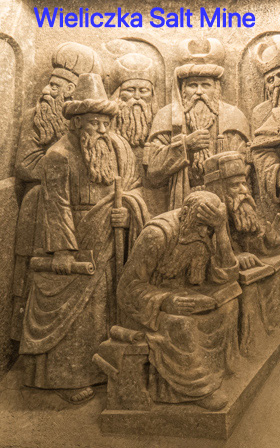
|
The Wieliczka Salt Mine can be visited on a day trip from Krakow, Poland. The bus will take 30-45 minutes to travel to the mine. Several notable people has visited the mine. These include Copernicus, Goethe, Pope John Paul II and Bill Clinton. |
Salt was deposited 15 million years ago. About 3000 years ago people started evaporating water from brine that floated to the surface. During the 13th century mining commenced and continued until 1996. By the completion of mining a 300 km labyrinth of galleries, 3000 chambers spread over 9 floors and reaching a depth of 327 metres had been created. In 1978 designated a UNESCO heritage site. Amongst the first group of sites to be so designated, it is still the only salt mine on the list.
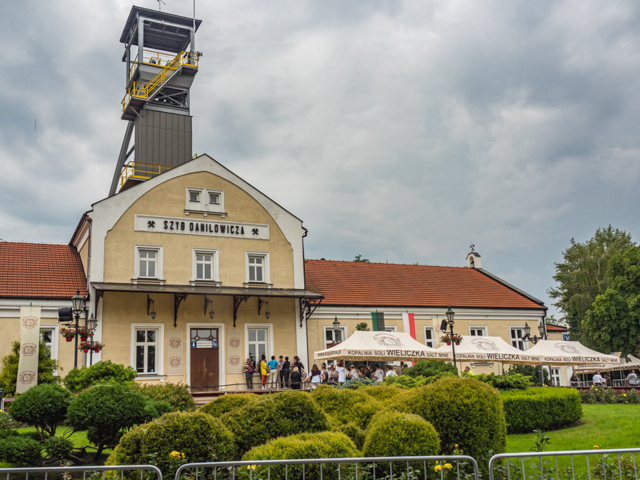
There are three routes, the tourist, the miners and the pilgrims. I took the tourist route which is about 2 kms long. A 378 step staircase takes you 64 meters underground.
The salt is not white but grey with a granite texture. The mine has its own micro-climate with a constant temperature of between 14-16C. Along the tourist route there are a number of exhibits depicting the miners life and mining techniques.


One frienze depicts people with lighted torches. Their task was to go through the caverns and burn any trapped methane. Common explosions made it dangerous work.
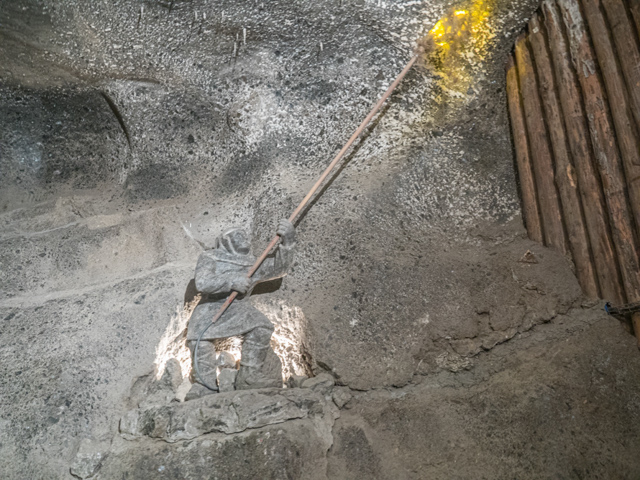
A miners life was tough and dangerous. Hence they tended to be religious. They carved out four chapels. Most of the frienzes and statues in the mine were carved by miners.
The Chapel of St Kinga is the largest and most ornate chapel. Measuring 18 metres by 54 metres and 13 metres high it was carved out by two brothers over 30 year period commencing in 1895. Its walls and interior are decorated by many statues and friezes. One frieze is a copy of Da Vinca's Last Supper. From the ceiling hang four crystal chandiliers. Actually they are made from salt which has been dissolved and reconstituted to create the crystalline appearance.

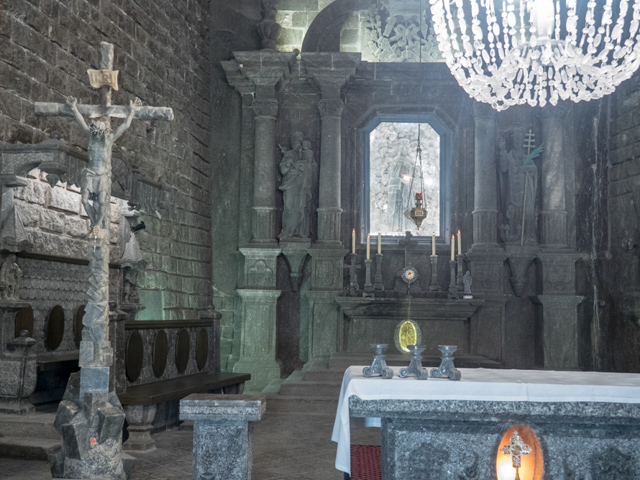

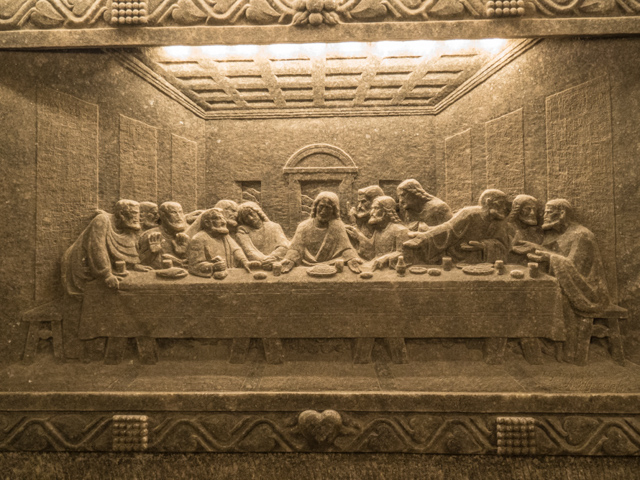
The chapels are used for a range of social function including weddings and concerts.
Also of interest is a salt lake in the Erasmus Baracz Chamber. The super saturated solution (320 g/l) is formed by water percolating through the rock salt. It is a luminous green. Erasmus Barącz was and engineer, who while working at the mines from 1915 to 1915, authored its drawings and plans.
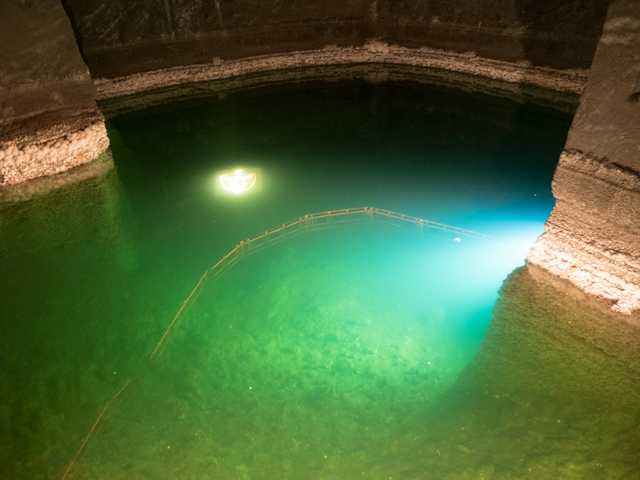
Three hundred and seventy eight up steps up to the surface? No! Thankfully return to the surface is via an elevator.